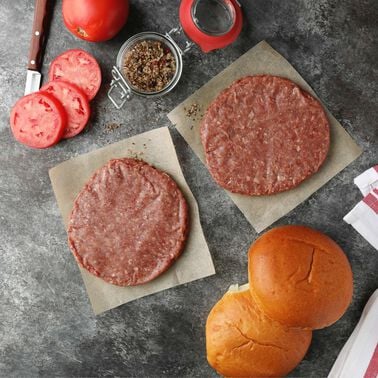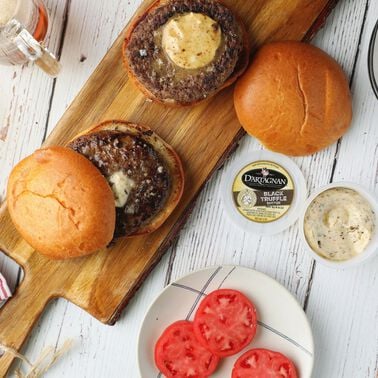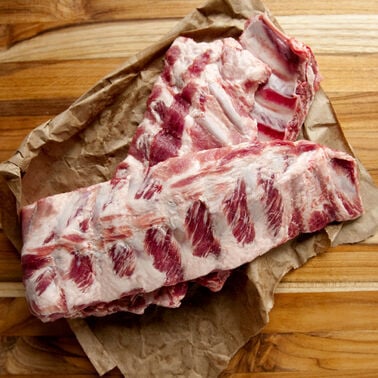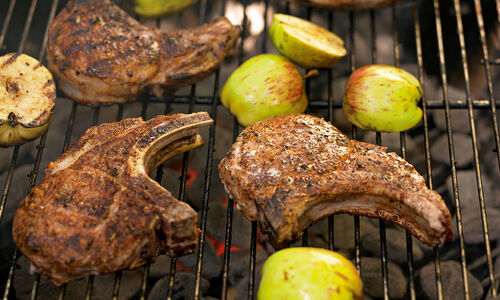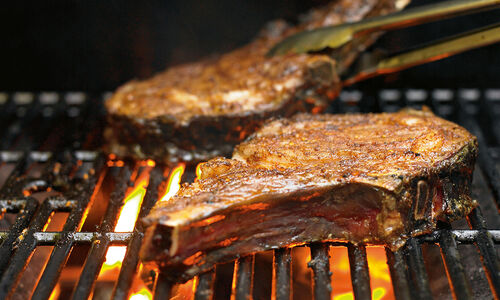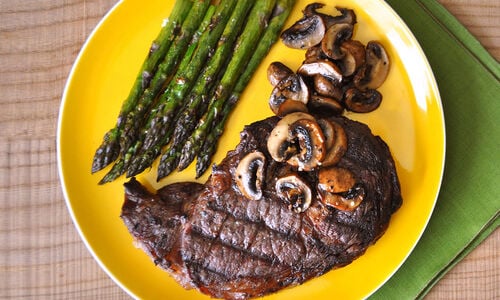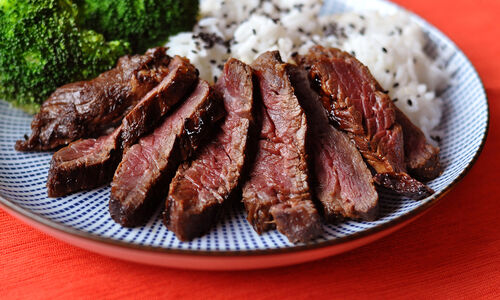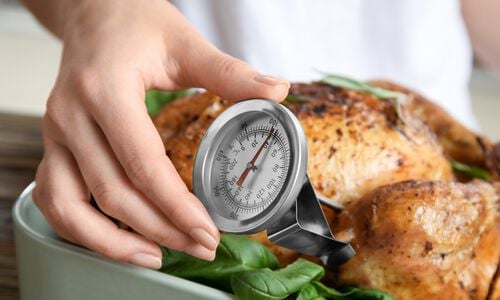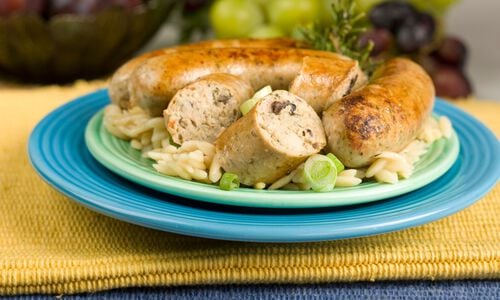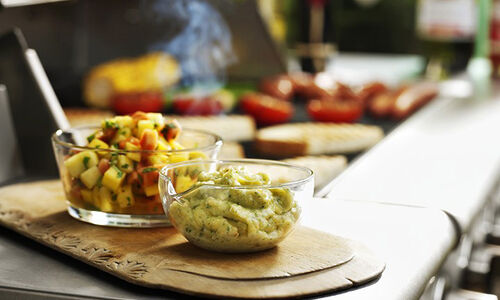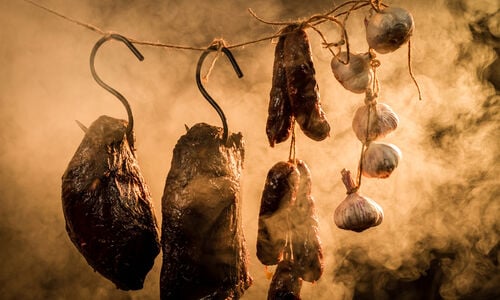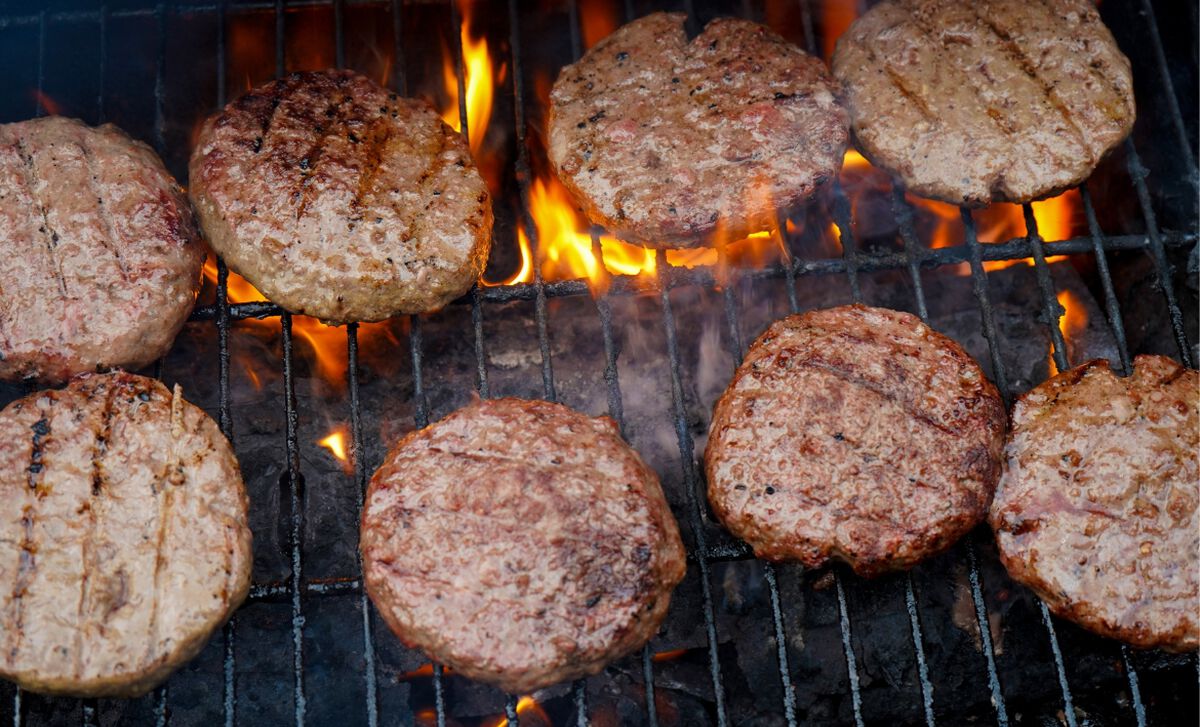
Prep the Grill
Always start with a clean grill. If needed, sweep the grate with a wire grill brush and rub with an oiled cloth. It’s much easier to clean a warm grate, so get in the habit of cleaning shortly after each time you cook. Always wait at least 24 hours after cooking to dispose of spent ash.
Choose your Fuel
We recommend natural lump hardwood charcoal, hands down. It burns hotter, cleaner and lights faster than briquettes. If you can’t find it in your area, regular untreated charcoal briquettes will work as well. Definitely steer clear of using lighter fluid or chemical-treated, quick-lighting briquettes.
For super smoky flavor, try adding wood chips to the mix. Wood chips or chunks cut from mesquite, hickory, applewood or alder that are made for grilling and smoking are available at hardware and specialty stores. While your charcoal is heating, soak the wood chips in liquid – you can use water, beer or even wine to add extra flavor. Soaking the chips will allow for a slower, smokier burn. Drain the chips and add a handful or two right on top of the hot coals right before cooking.
Light it Up!
There are many ways to light charcoal but we prefer to use a chimney starter – it’s easy, fast and efficient. Just remove the cooking grate, place the chimney starter on the lower grate, stuff a couple of crumpled sheets of newspaper in the bottom and fill with charcoal. Light the paper through the holes in the chimney and wait until the top coals are covered in fine ash. This may take about 10-15 minutes for lump charcoal, 20 minutes for briquettes. Lift the chimney to dump the coals and with tongs, arrange as needed (see Direct or Indirect below). At this time you can also add more charcoal. Replace the cooking grate to heat and you're almost ready!
Direct or Indirect Heat?
Direct grilling is when the meat is placed directly above the heat source - think broiling. It’s great for quick-cooking cuts like beef steak, duck breast, pork chops, sausages and ground beef burgers as it cooks fast and produces a fabulous sear. For this technique, keep the charcoal piled evenly around the bottom grate and place your food directly above the heat. You can also create cooking ‘zones’ if needed by keeping 2 or 3 height levels of coals for medium, medium-high and high. Having different temperature zones is especially helpful if cooking different types of food at the same time or for shifting food if the outside is charring before the inside has had time to cook.
Indirect grilling is when the heat source is off to the side, allowing for radiant cooking and when covered, circulation of hot air, much like convection, roasting or baking. This method imparts a wonderful smoky flavor and allows larger pieces to be cooked through without burning, keeping them nice and moist on the inside. It’s excellent for whole birds, roasts, full pork rib racks and any other larger cut that requires long, slow cooking at a moderate heat. For this technique, rake hot coals into two piles on the sides of your grill then place meat in the center of the grate. Some grills come with basket inserts for this purpose.
Ready, Set, Grill!
A longstanding but unscientific way to tell if your grill is hot enough to cook is ‘the hand test’. If you can hold your palm about 6 inches above the cooking grate for no more than 2 seconds, it’s high heat. If you can stand to hold it for up to 4 seconds it’s medium-high, 7 seconds, it’s medium. A better method is judging by appearance. If your coals are covered in light grey ash and glow orange when gently blown on, they’re ready.
Quick Tips
- Just before placing meat on the grill, wipe the heated grate with a lightly oiled cloth using tongs to prevent sticking.
- Meat should be turned to cook evenly but just once – don’t fuss with it and don’t even think about squishing it or poking it with a fork. Be gentle. Use tongs for most cuts and a wide spatula for burgers. If your meat sticks to grate, it’s not ready to turn yet.
- Keep a small spray bottle of water close by to extinguish flare-ups, especially when grilling marinated or sauced meats or cuts with a generous amount of fat, such as duck breast. A handful of coarse salt tossed onto too-high flames also works without bringing down the temperature.
- If you like to baste with sauce during cooking be sure to set some extra sauce aside at the beginning to avoid cross-contamination.
- Also, always remember to use separate cutting boards and platters for your meats before and after cooking.
- When cooking poultry and large roasts use an instant-read thermometer to check for doneness.
- Always rest your meat for at least 5-10 minutes before serving.
